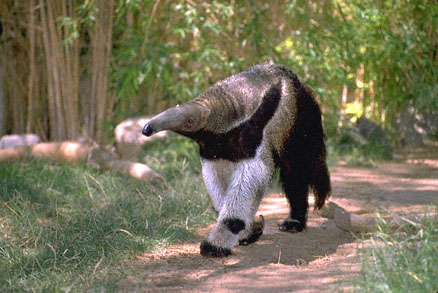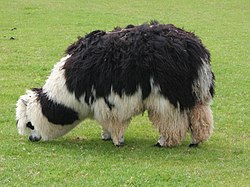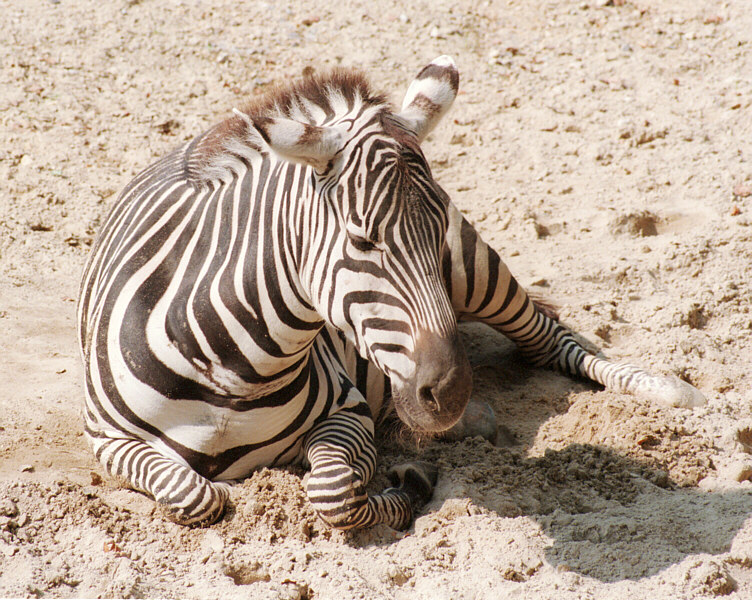Anteater
All anteaters have elongated snouts equipped with a thin tongue that can
be extended to a length greater than the length of the head; their
tube-shaped mouths have lips but no teeth. They use their large, curved
foreclaws to tear open ant and termite mounds and for defence, while
their dense and long fur protects them from attacks from the insects.
All species except the giant anteater have a prehensile tail
They capture their prey by inserting their tongues into insect nests
that they have torn open with the long, sharp, curved claws of their
front feet; the claws are also used for defense. Giant anteaters and the
smaller tamanduas use their hind legs and tail as a tripod when
threatened, which thus frees the front limbs to slash at attackers.

















































